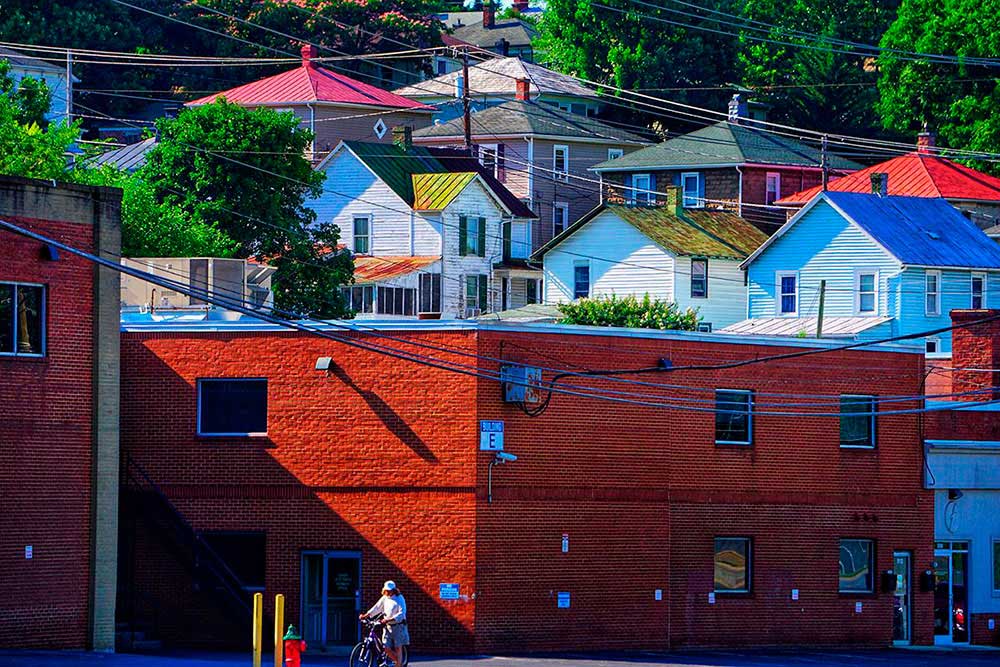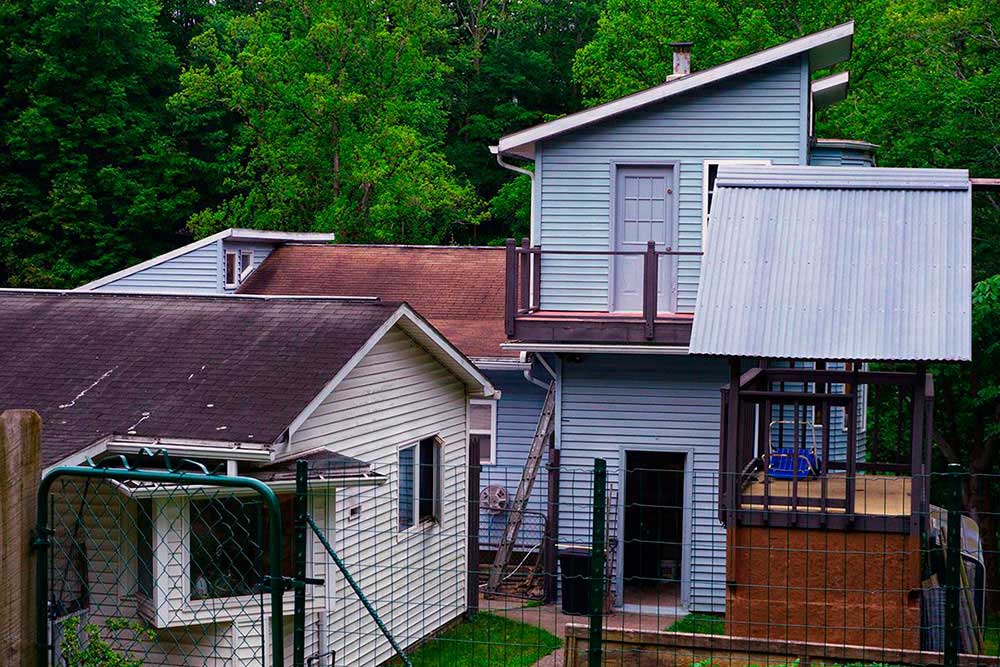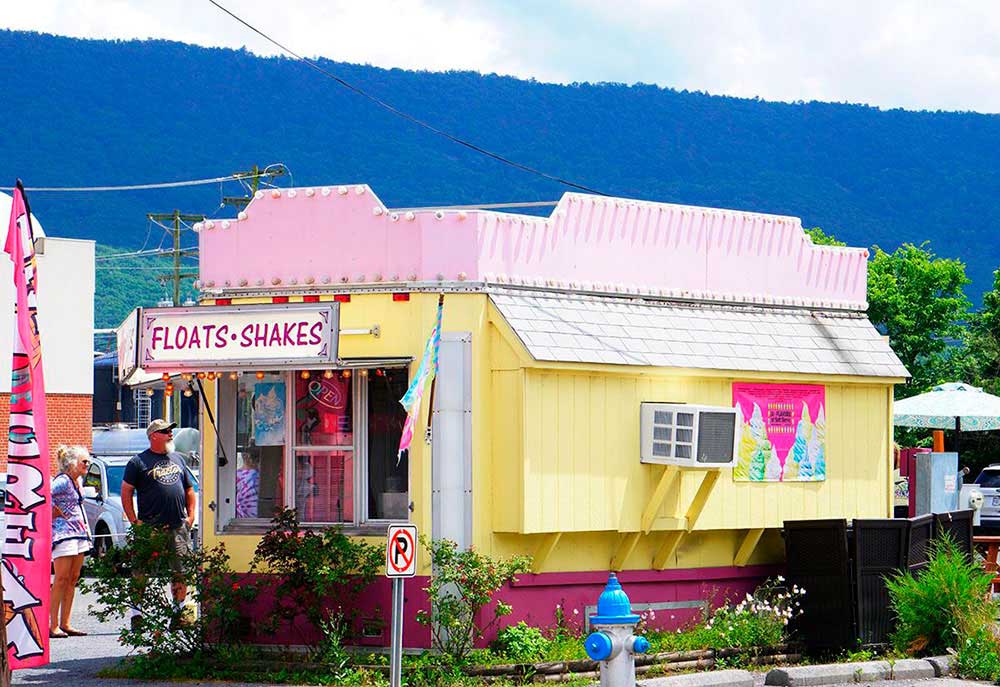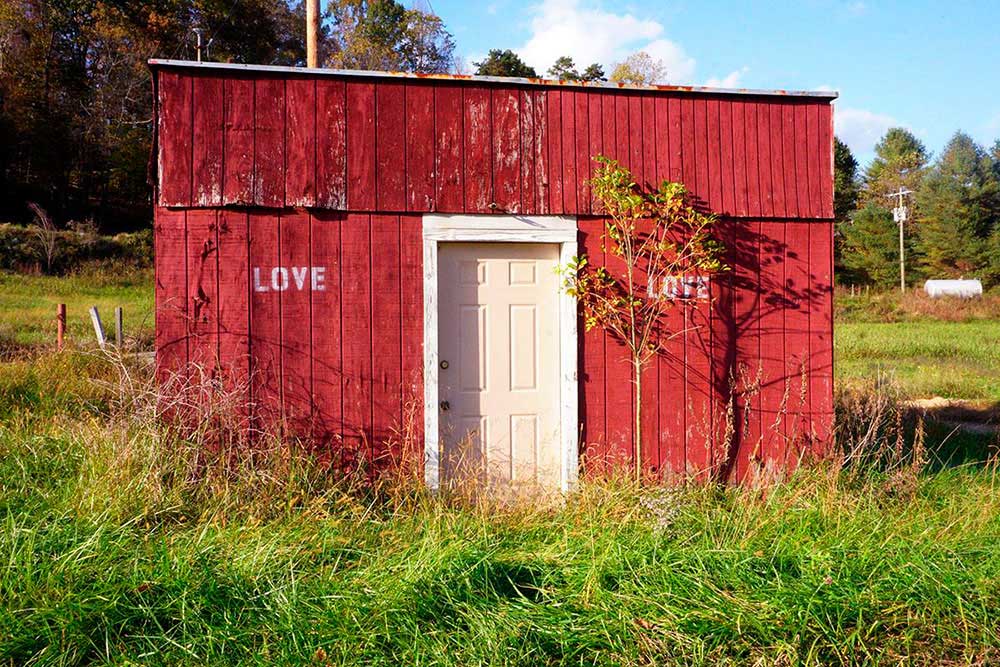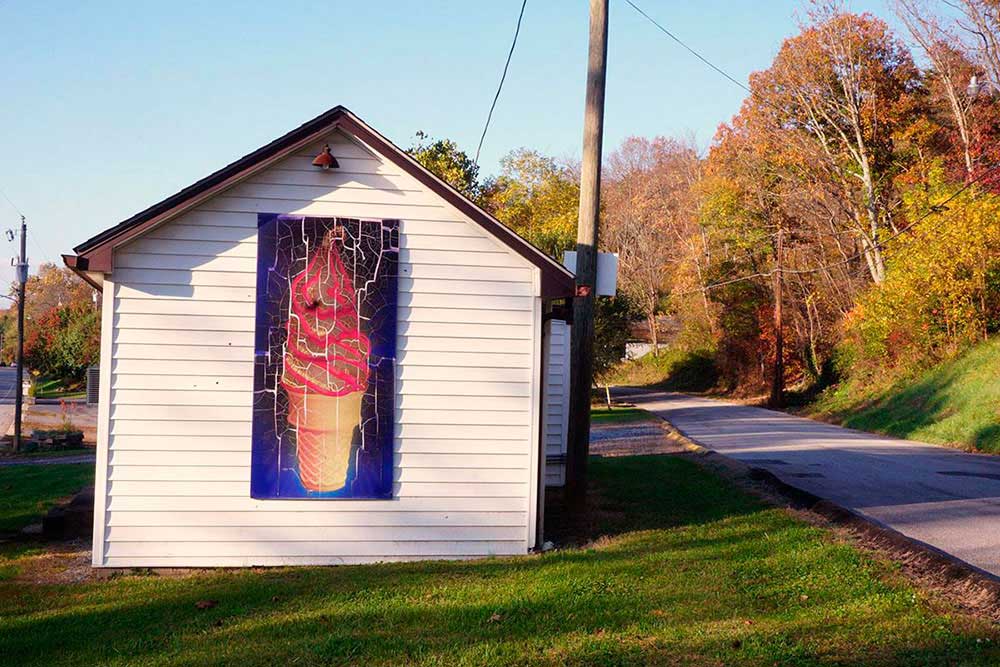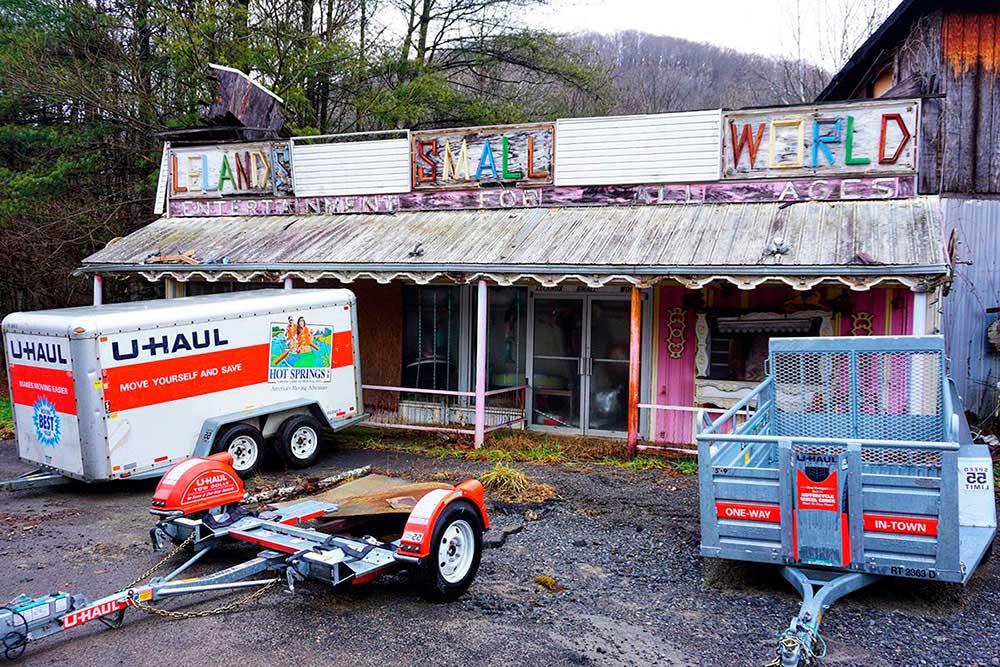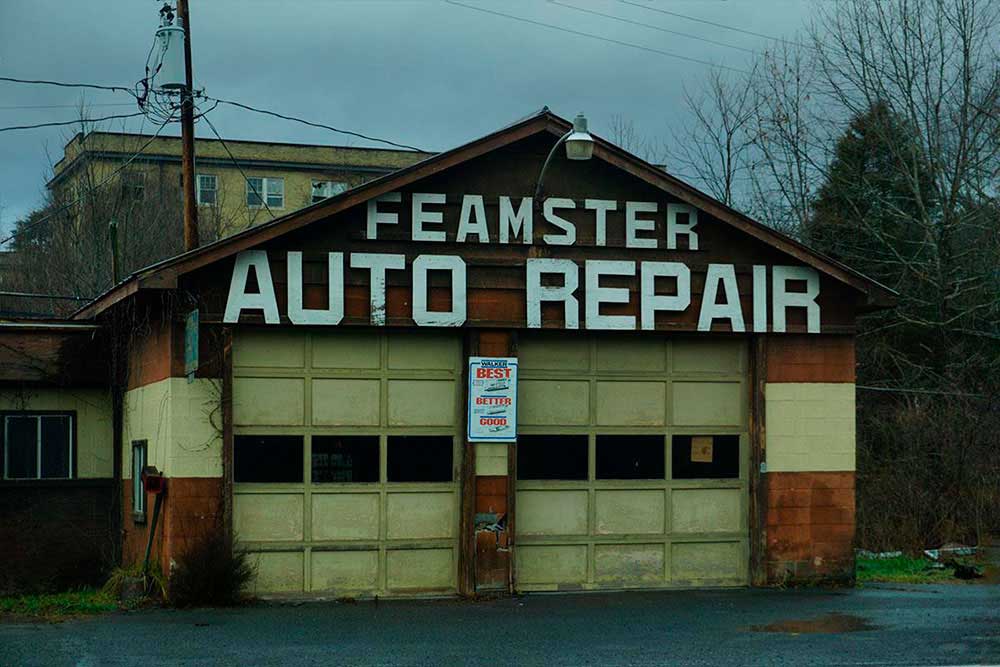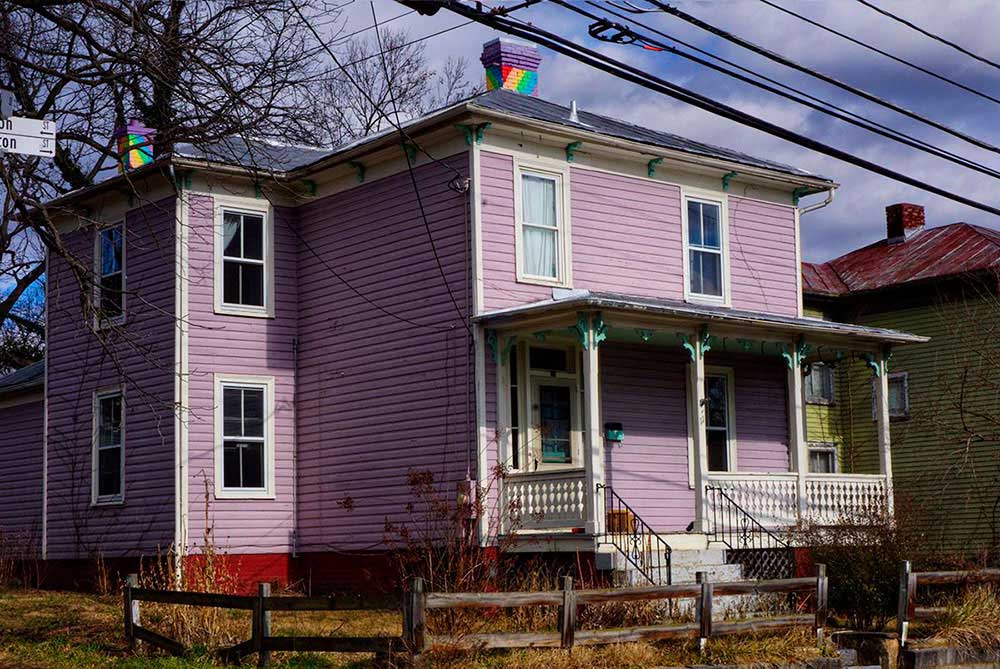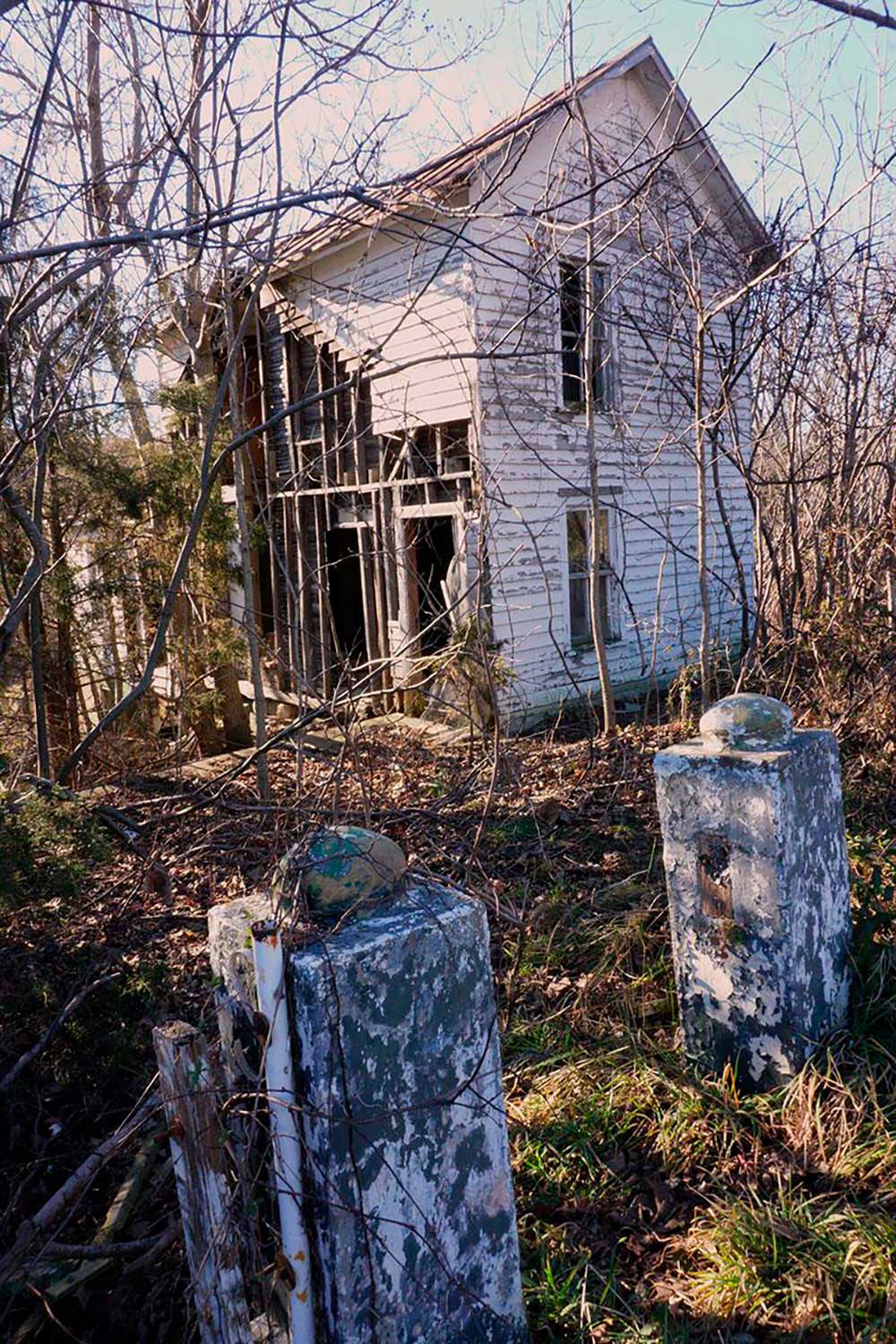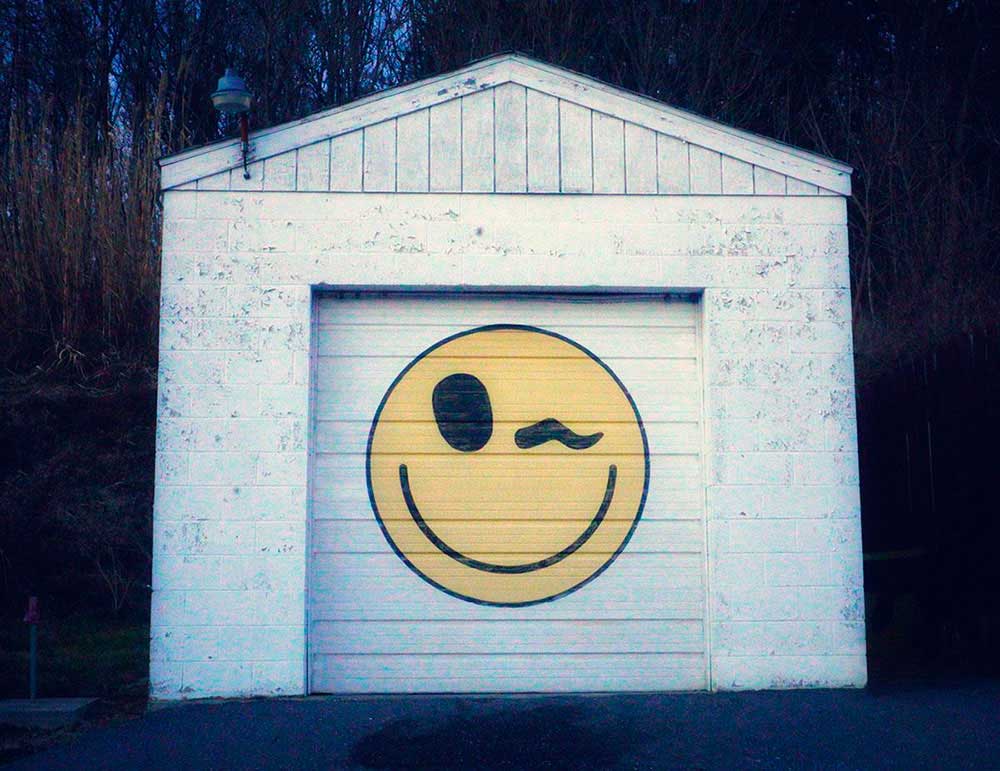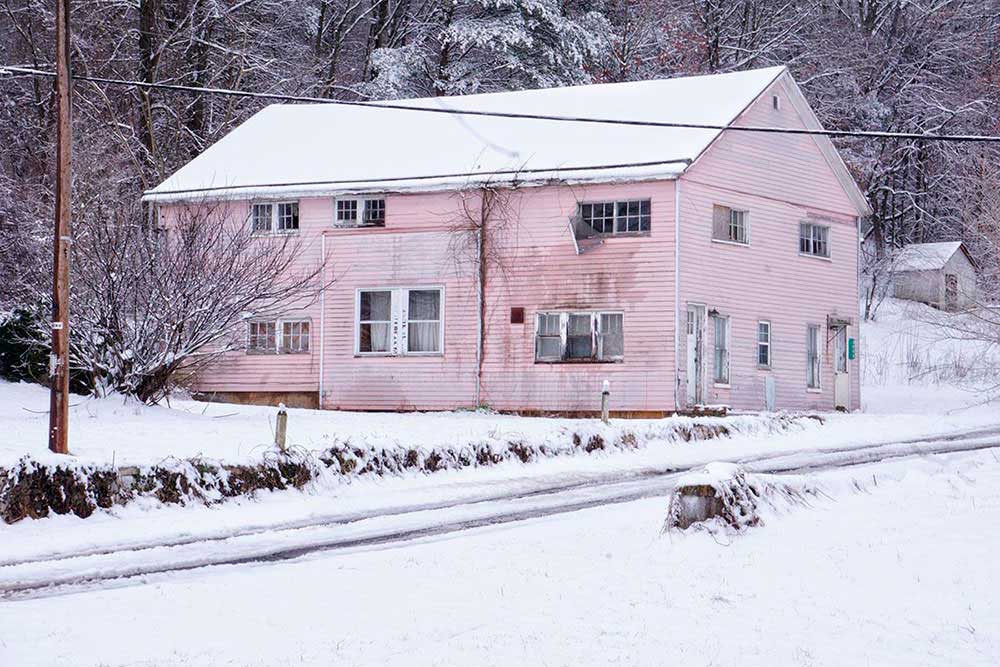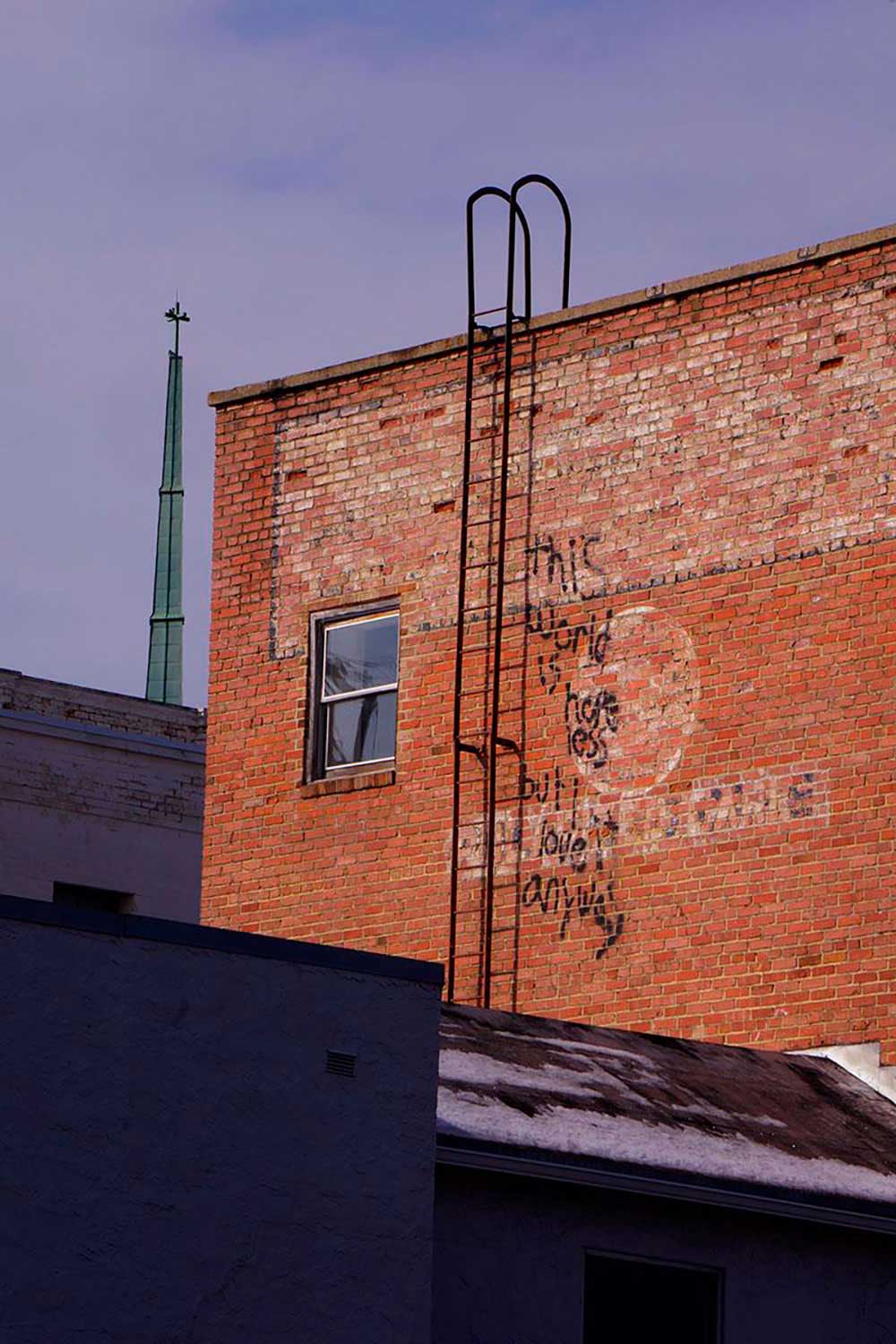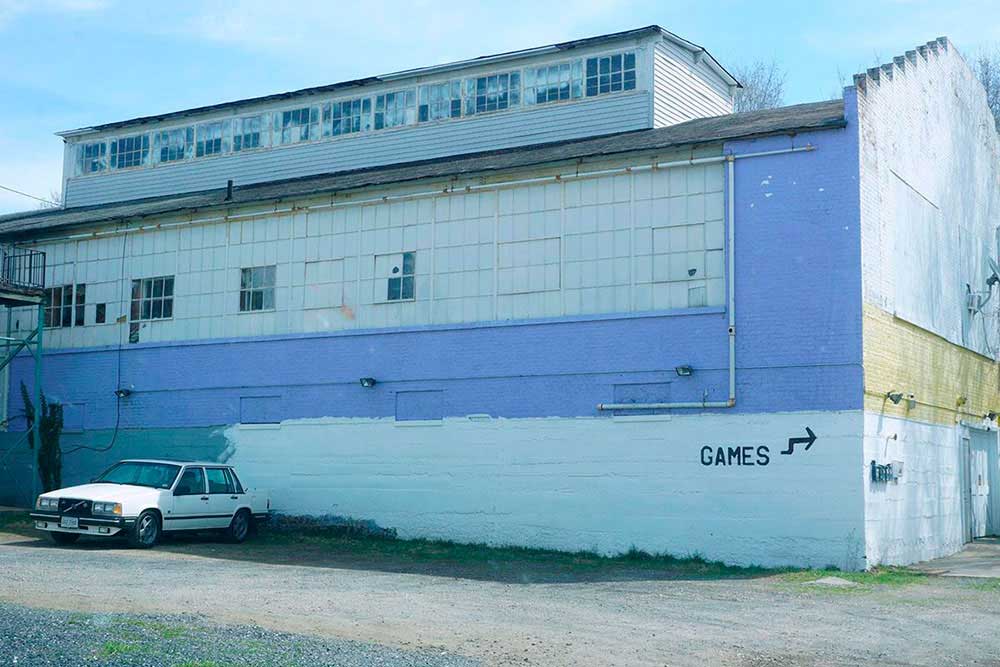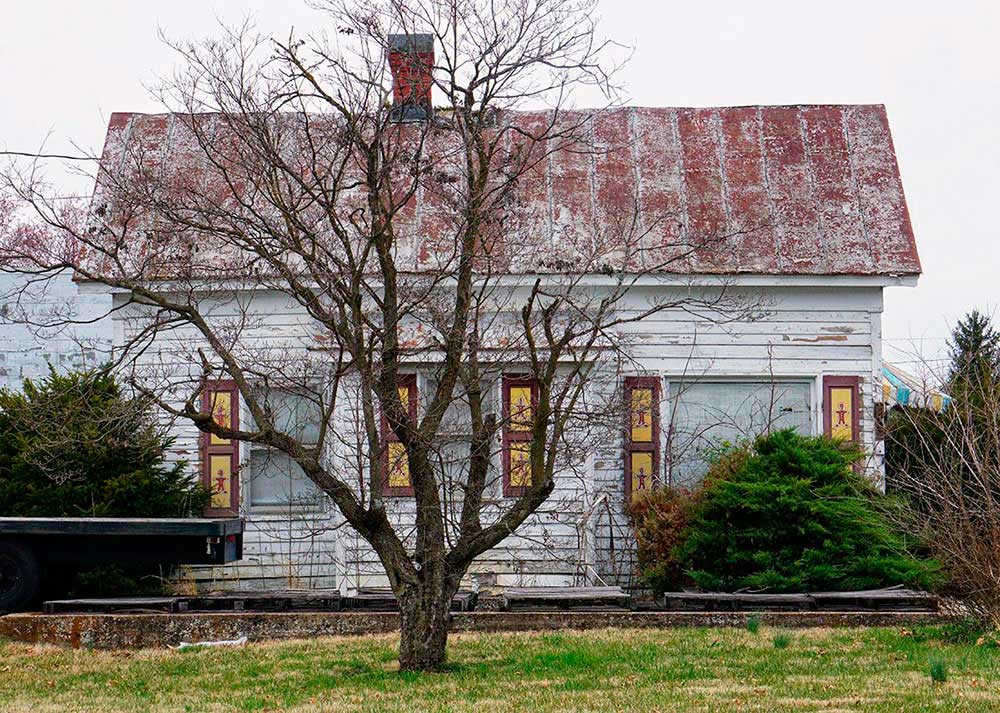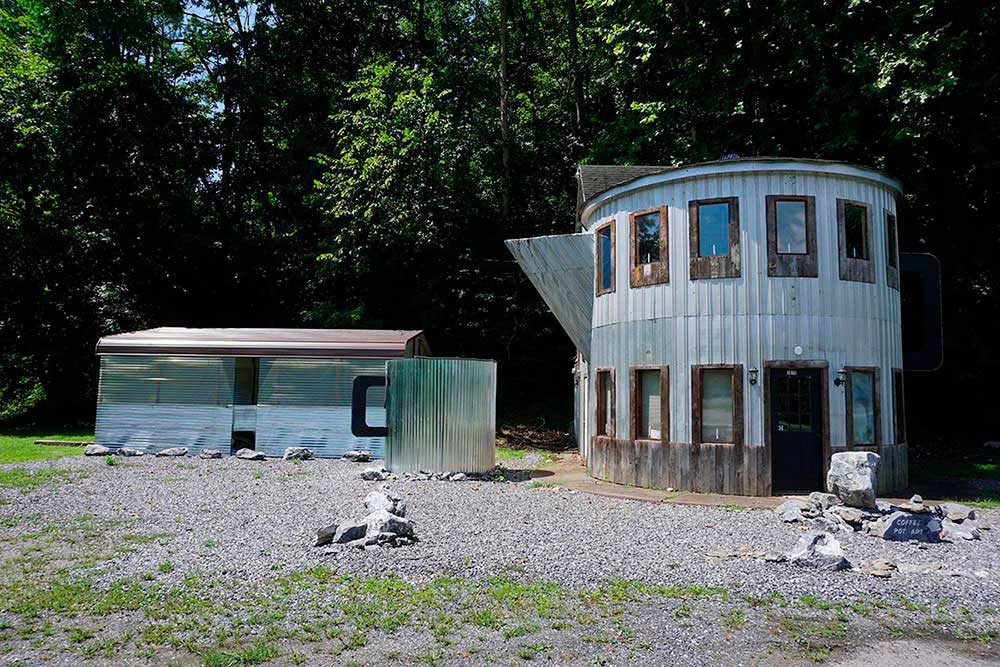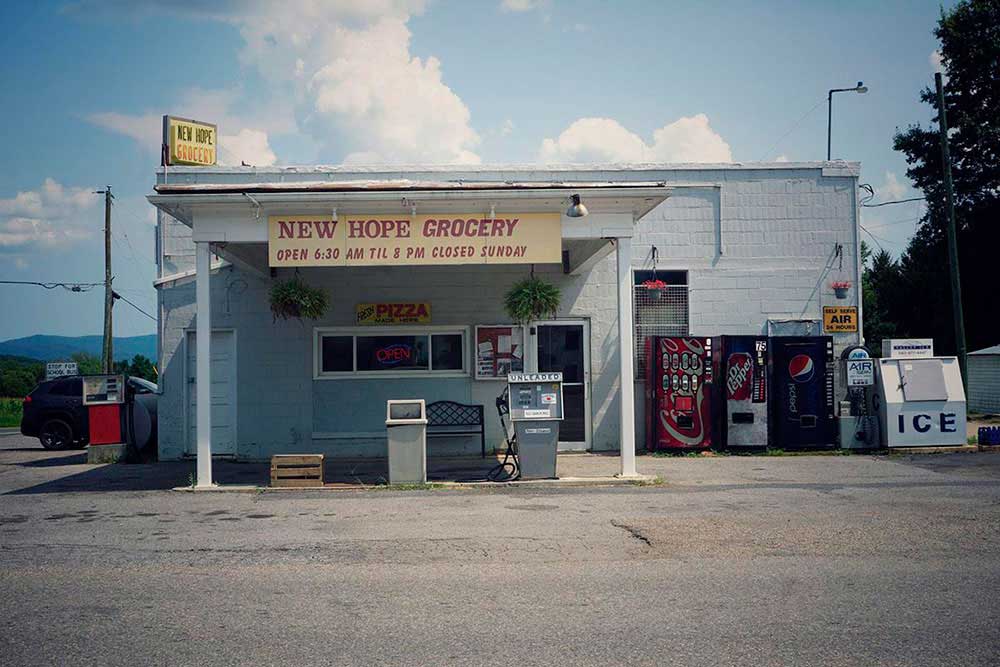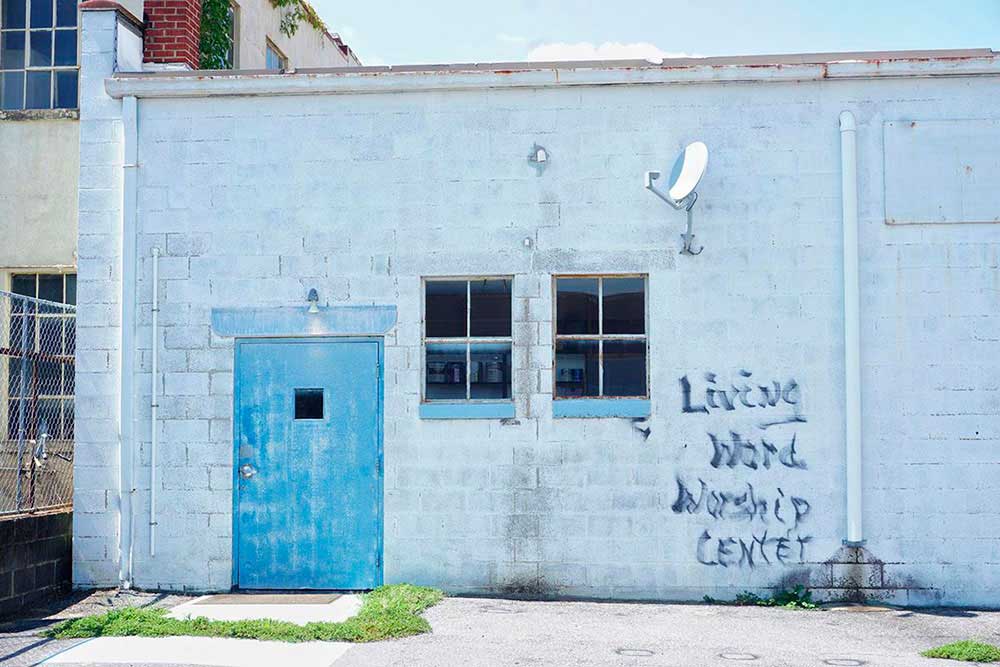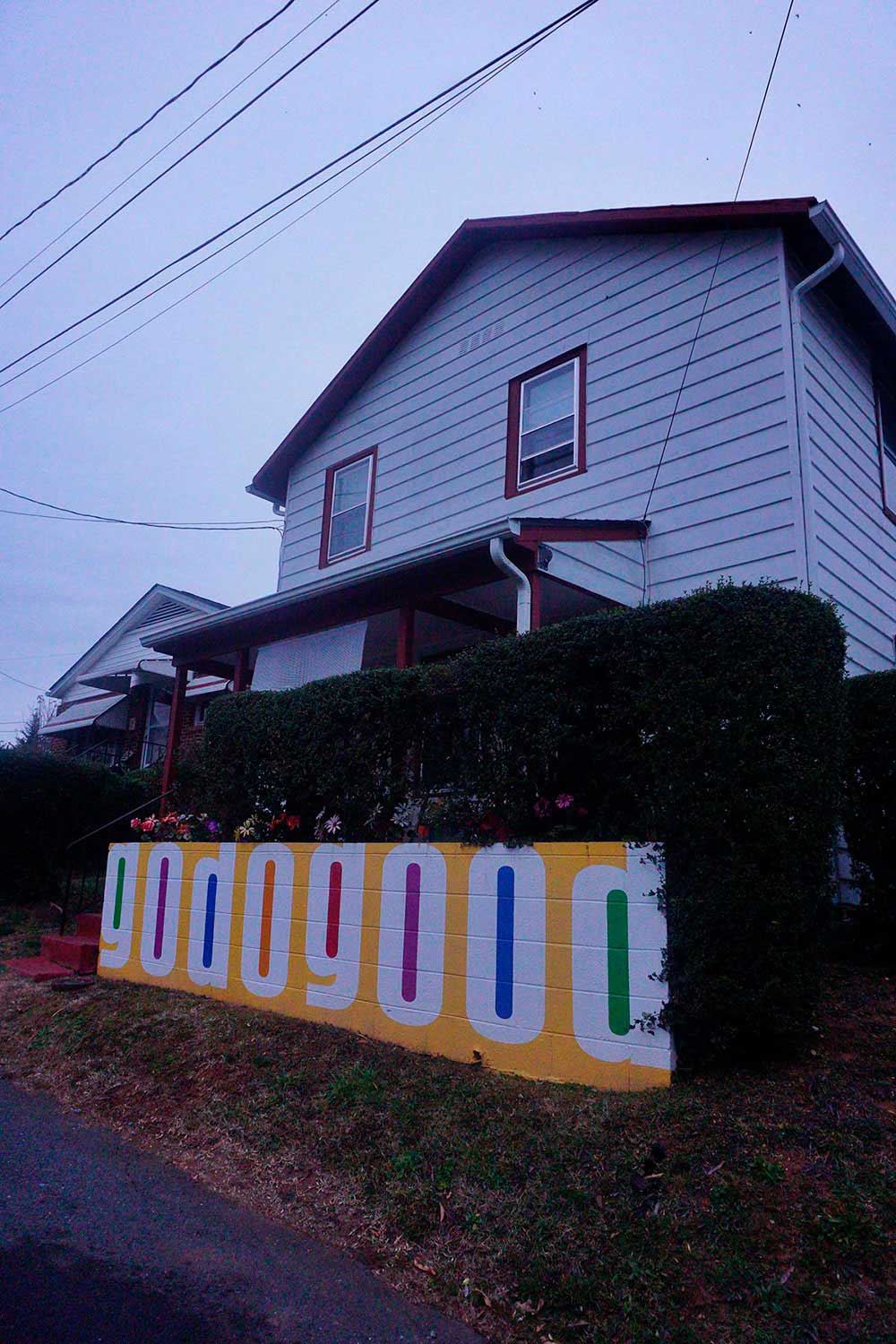The theme of the collection is «odd buildings,» whether they’re odd for their paint job, their architectural design, their graffiti, or their relation to other buildings.
Some of them I pass every day, some of them are landmarks for specific trips my family used to take when I was a child, some of them are oddities that I simply felt the need to pull over and record for posterity. This collection highlights how much or how little it takes for a building to become the one that everyone references when giving directions. Whether you build a coffee pot-shaped house or just give your chimney a funky paint job, all it takes is one unique idea to become that house or that building. To me, the existence of these buildings highlights both how much and how little individuality exists in the human population. The broad range of choices – rainbow chimney, pastel pink paint job, gingerbread shutters, signs with fun fonts – show how much difference there is in personal taste and style. And yet, this is a collection of 18 photos – 18 buildings total among hundreds that we pass per day and take no notice of simply because there is nothing to notice, no outward expression of personal style at all.
About Olivia Hathaway
My name is Olivia Hathaway, and I am currently a college student in Virginia. Though I will soon graduate with degrees in Chemistry (B.S.) and Biology (B.A.), I developed a photography hobby long before I started them. I began taking pictures when I was 12; I had received my first cellphone, a flip phone, and that was the first time I had the ability to record images on demand. My photos improved with the quality of my phone camera as I went through various upgrades. Then, in my sophomore year of high school, I took a summer enrichment course in cell phone photography, where I was introduced to Snapseed (a free app that I now know basically has lower quality versions of all the features in Photoshop).
That was the first time I had the ability to edit photos, and I spent a lot of time focused on color in particular (I’m hypersensitive to color – I have perfect color vision, I can match colors exactly from memory, and I recently discovered that I can mix paint colors to repair damaged paintings). Having the ability to change saturation, lighting, and tint added a whole new dimension to photography, and the time crunch of my upperclassman years in high school shifted my main form of visual art from drawing to taking photos. In my senior year of high school, my parents became aware of my photography hobby and bought me the camera that I currently use (a Sony α6000). Following high school, I enrolled in a first-semester study abroad program in London. At that time, I was still using my cell phone camera, but I did several photography-based projects for my Global Perspectives class; I did visual comparisons of London architectural features to flowers in local gardens, and I photographed native British plants with their illustrations in Wild Flowers in Britain by Geoffrey Grigson.
After I returned from study abroad, I took a semester off to learn how to use my actual camera, and shortly after that I started making specific “photography expeditions,” where I’d come up with subjects that I wanted to photograph and either go out in search of them (like my spring flowers at night project) or wait for the right day/time to photograph some stationary scene (like my recent beach motel at sunset project). I also began consistently sharing my photography on Facebook, Instagram, and other social media sites. The overwhelmingly positive response to my photography, ranging from people saying I make a hotdog stand look like a place they’d like to live to others telling me that they scroll through my sunset and flower projects when they need to feel a deep sense of calm, convinced me to begin seeking ways to bring my work to a larger audience. For this reason, I am very proud and thankful to be featured in Dodho Magazine, and I hope all of its viewers enjoy my work.



